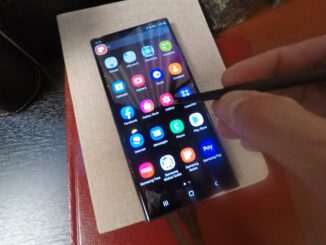
KINSTON – For many parents today, they remember growing up in a decade where cell phones, let alone smartphones, didn’t exist. When phones started to emerge, there were bag phones, car phones, and Zach Morris’ phone.
Movies were VHS tapes, kids used imaginations and played outdoors, and little amounts of time were spent in front of a screen. Today, kids as young as toddlers can maneuver iPads, and smartphones are everywhere you look.
Parents have begun asking themselves, “At what age should my child get a smartphone?
One mother from Austin, Texas has the answer and has since created what’s become a national movement.
“I was noticing a change in how children were growing up in our community. Instead of playing football outside and running around with friends or reading books, we noticed kids were spending crazy amounts of time in front of their smartphones, Instagraming, Snapchatting, You Tubing and texting. It seems to be happening at a younger and younger age,” said Brooke Shannon.
Shannon, a mother of three daughters – Grace, 10, Mercy, 8, and Bella, 4, — looked for a solution and developed Wait Until 8th, a movement to have families signs a pledge saying they will wait until their child is in eighth grade to buy a smartphone.
“Kids as young as first, second and third grade were coming to school and sport games with iPhones. We wanted it to be different for our children. Why does a second grader need an iPhone? Why are kids online more than hanging out in person with friends?” said Shannon.
According to the research firm, Influence Central, children are getting their first smartphone around age 10, which is down from age 12 in 2012.
For some families, children were as young as 7 when they first received a smartphone, while other children as young as toddlers were learning how to use iPads.
“Many of my friends said they wanted to wait as long as they could but knew it would be an uphill battle. Out of this dialogue came the idea to rally together as a community by starting a pledge,” said Shannon.
Parents were caving in to demand and buying smartphones so their child wouldn’t be left out.
The Wait Until 8th pledge empowers parents to rally together to delay giving children a smartphone until at least the 8th grade or 14-years-old. It’s become a support network for those parents who want to wait on giving their child a phone.
“Every family has various circumstances and dynamics that will shape this decision. We hope by creating this pledge, parents that would like to wait will feel more empowered to do so,” said Shannon.
Even Microsoft founder Bill Gates has reported to the media in recent months he wouldn’t allow phones for his children until they were 14 years of age or older.
“Research shows kids are spending three to seven hours a day on these smartphones. There is only so much time in a day. They go to school, come home and are on their phones. What is being lost? Interacting with people face-to-face, reading, and playing. These devices are becoming addictive,” said Shannon.
“A child at a young age with a developing brain is not able to decide for themselves how to limit their screen time,” she continued. “Kids are having their academics interrupted, they are opening themselves to content they shouldn’t see, and even risking cyber bullying.”
Smartphones have been around for ten years and counting. Technology is continuing to advance and while parents are upgrading to the newest version of the iPhone, they are giving the older version to their kids.
“We are another resource for parents in how to navigate this situation,” said Shannon.
Though it began in March, the Wait Until 8th pledge has gained momentum. More than 2,700 families have signed the pledge in 49 states and from 500 schools. Seventy-five families have signed from North Carolina and North Dakota remains the only state not represented.
Here’s how the pledge works: A pledge becomes “active” once 10 or more families from a grade at a school sign. Once 10 families sign, they receive a group email letting them know who else from their school signed.
“Parents are feeling pressure from their kids to not be the one left out in class with no smartphone,” said Shannon.
The pledge is for smartphones only. If a family wants their child to have a basic phone that calls and texts, they can still sign the pledge.
“My hope is that families will really look at the issue, do their research and encourage kids to be kids and place healthy boundaries for using technology responsibly,” said Shannon.
To find out more information, go to www.waituntil8th.org.


